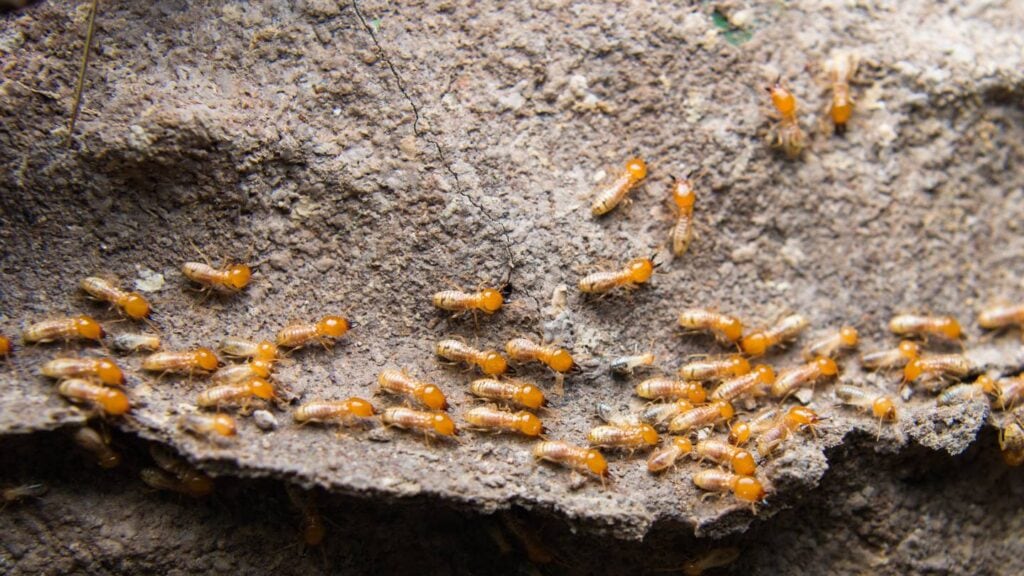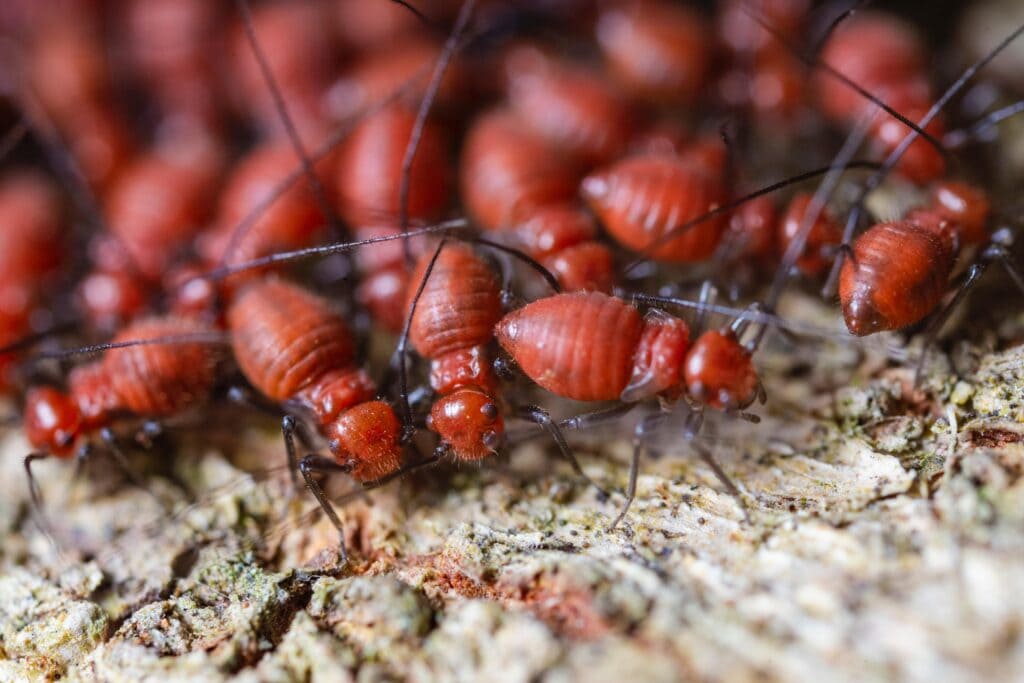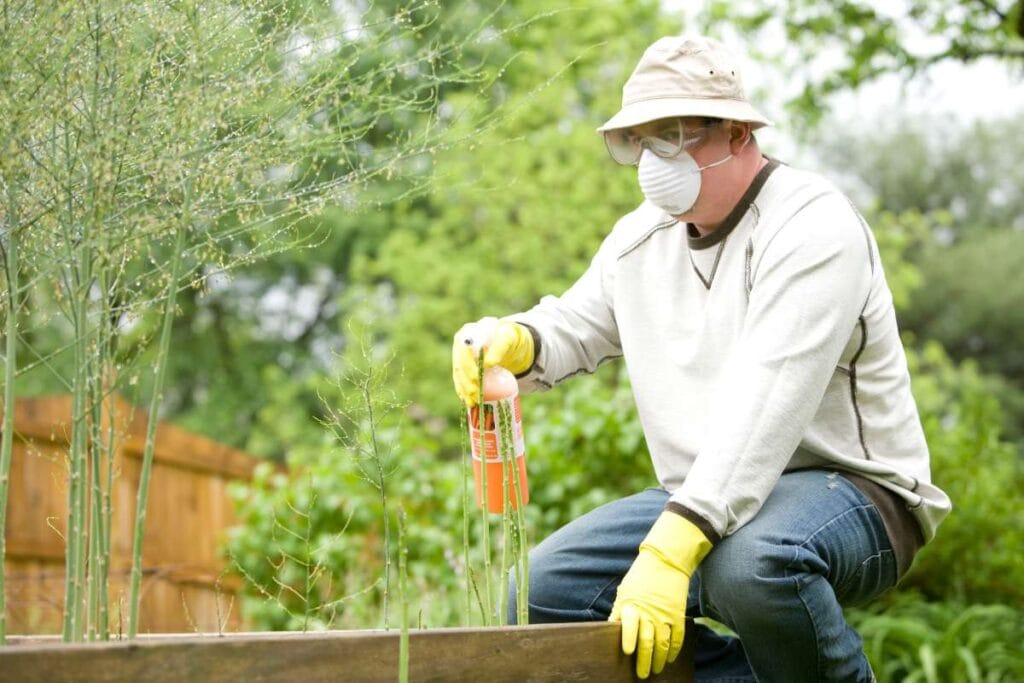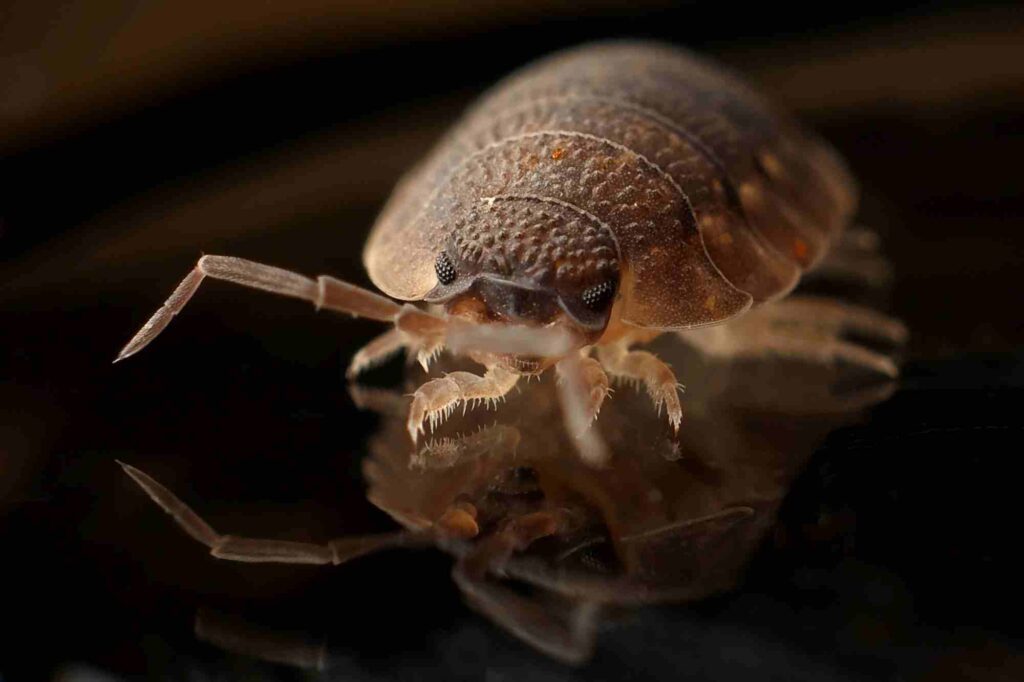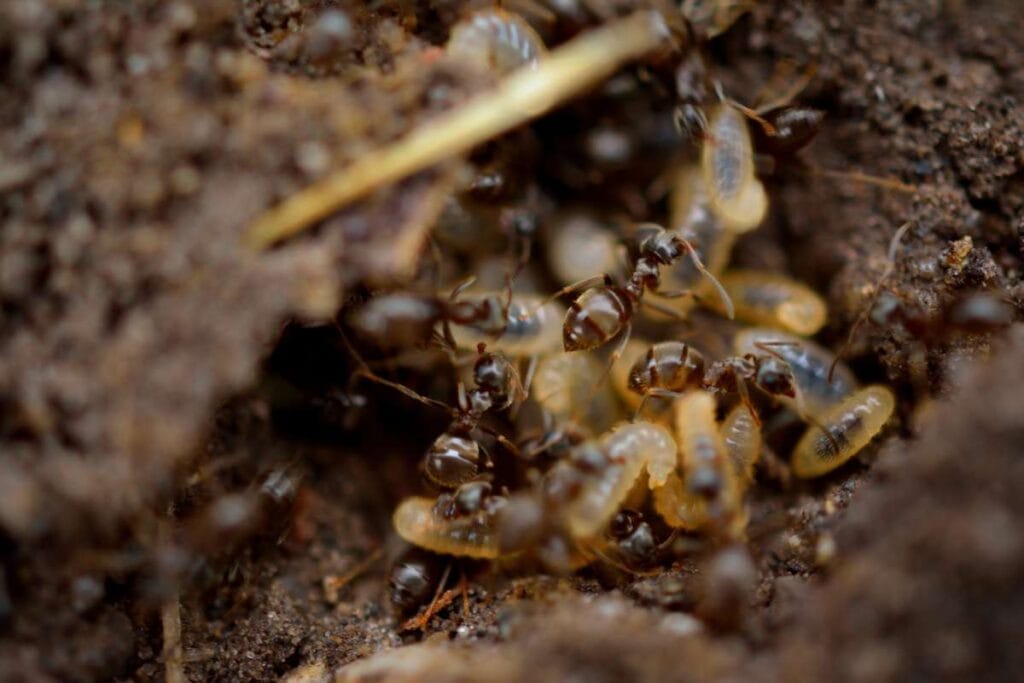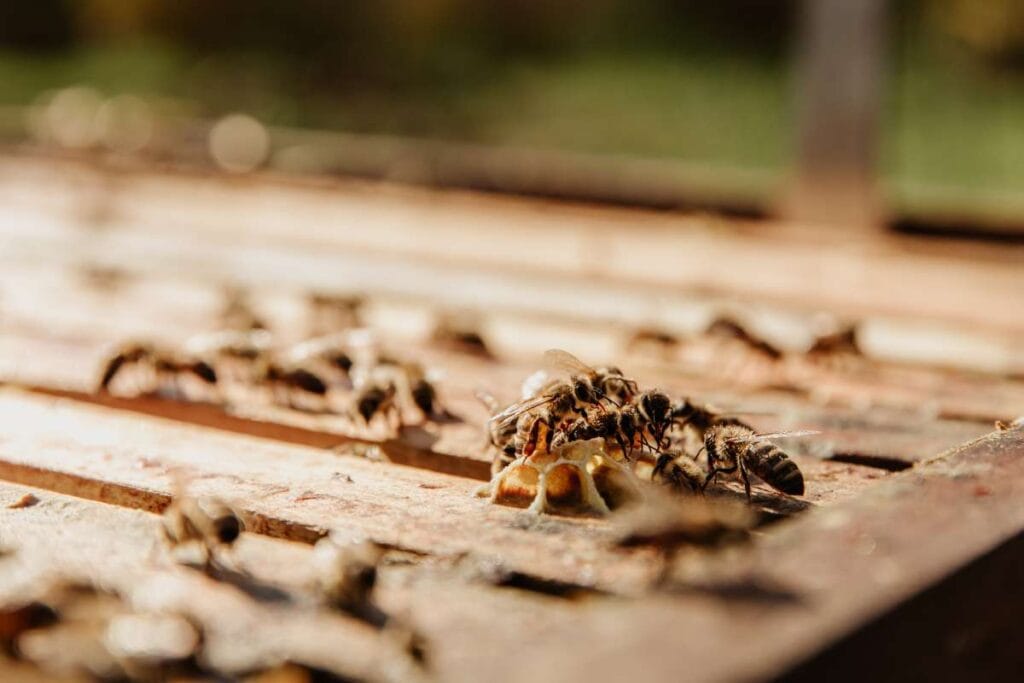If you want to prevent termites from entering your yard, you must avoid the various things they find attractive. Termites' favourite food is... Too much moisture, wood or both can be disastrous. They can survive in a damp environment, and the wood provides sustenance.
The ultimate aim of all the termite-prevention strategies we'll cover is to eliminate as many moist areas and wood constructions in the yard as possible. If you find termites in your yard, we can advise you on keeping them out of your house.
Should You Worry About Termites In Your Garden?
Termites discovered by digging or planting in a southern homeowner's yard or garden are common. In rare circumstances, you can catch these bugs when they're foraging on land at night.
Termites sometimes scavenge grass clippings from your yard and return them to their colony. The importance that termites play in our ecology is significant. These organisms are responsible for recycling and decomposing dead wood, which contributes to preserving a critical balance among the live organisms in our backyards.
TermitesOn the other hand, the termites become a potentially hazardous economic pest when they nest close to residential or commercial property.
Termites may do much damage, which you might be aware of. You might have heard that they annually damage structures worth billions of dollars. They can wreak damage on a home, as you might have read somewhere.
According to an expert exterminator, you might be surprised to hear that pests can quietly gorge themselves on your property. Termites are called "silent destroyers" because they can dismantle the most valuable objects in a home without causing any noise or disturbance.
Is it a problem if you find a termite in your yard or garden?
No, on the one hand. Plant debris such as bark, humus, leaves, wood, and even herbivore excrement is a natural food source for termites. But after the termites in your colony have eaten everything in sight, they will move on to the wood of any buildings they come across.
Simply put, the termites' desire to consume food may cause them to invade your home. The termites will construct mud tunnels that will lead from the colony to your home if they find wood to eat there, which they will do.
What happens if this happens?
- They pose a structural threat, particularly to homes mainly constructed of wood.
- Termites can ruin a building's framework by eating away at foundations, walls, and even timber if the outside isn't made of wood.
- Your home's furniture, ceilings, floors, and cupboards will all be at risk of termite infestation.
- Other cellulose-based products, including carpets, books, clothing, and picture frames, are vulnerable to termite attacks.
- The harm that termites produce might advance rapidly if the correct steps aren't taken since they feed continuously.
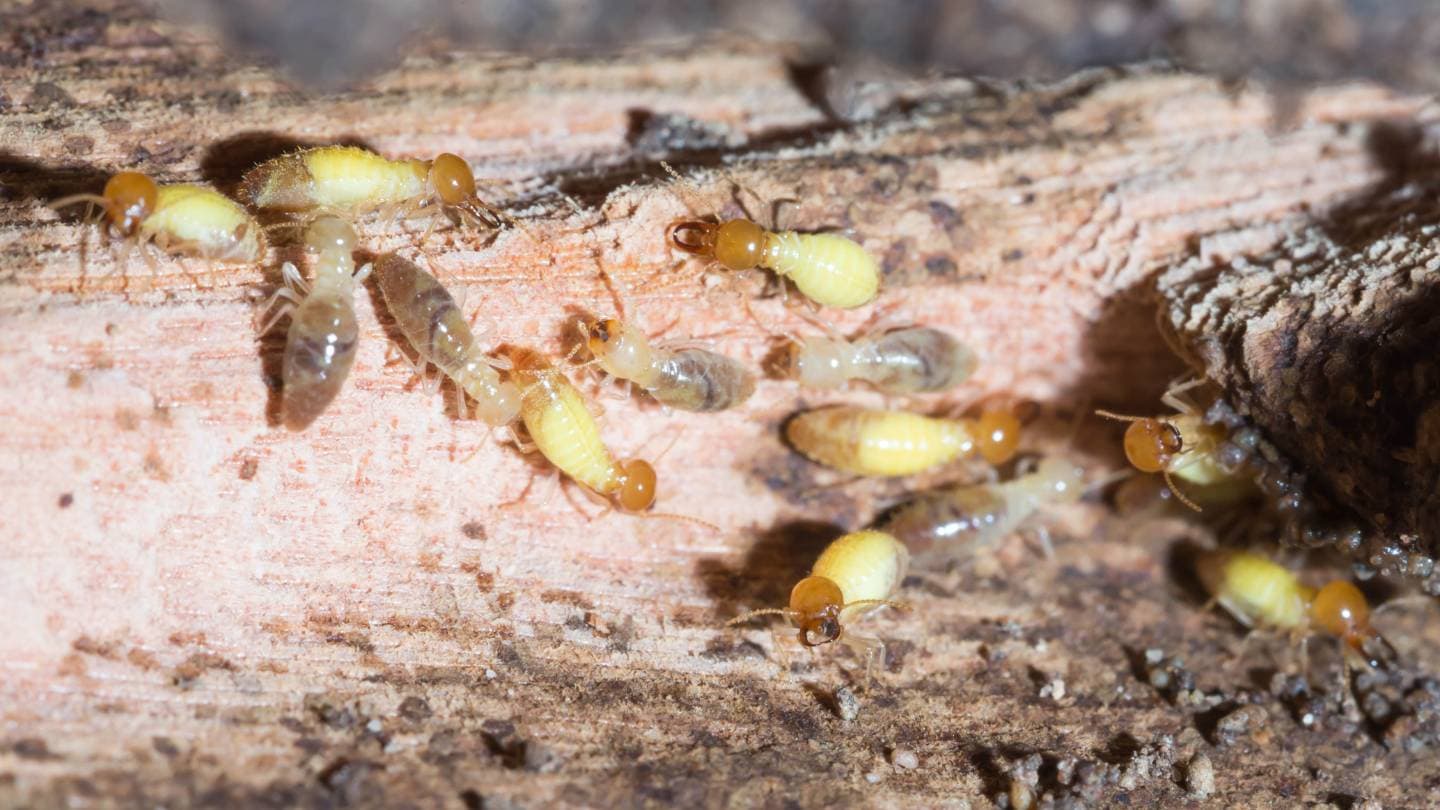
Termite Infestation Signs In Your Yard
How can you determine whether or not the procedures you have used to avoid termites have been successful? A termite colony in your yard may be present if you see any of the following indicators.
Discarded Wings
Termites that are in the process of swarming shed their wings after the mating season, which begins during the warmer months of spring and summer. You may have an infestation of termites if you discover many insect wings near your property. Termites could have produced these wings.
Mud Tubes
Subterranean termites construct mud tubes using dirt, saliva, and small bits of wood. The tubes are essential for moving from the earth to the structures they intend to infest. Termites are present if mud tubes are visible on a tree, woodpile, or the foundation of your house. The absence of mud tubes is no guarantee that termites are not present. Termites that don't use mud tubes are damp and dry wood termites, two more prevalent pest kinds.
Seeing Live Termites
Termites can typically remain concealed beneath or within wooden constructions; nonetheless, there are instances in which you might come across them. There are vast numbers of swarmers flying around during the time of year when they are mating. In addition, as you are excavating, you can discover termites underneath in the dirt.
How do termites appear? Depending on the species, termites can be any colour, from white to black to brown. The majority measure between ¼ and ½ inch in length. They look like flying ants at first sight.
Droppings
Kick-out holes are how termites make their waste disposal possible. Search for holes with a diameter of around one millimetre and mounds of faeces nearby. Because termite faeces are so minute, they appear to be small heaps of gritty dirt to the naked eye.
Wooden Structures Are Damaged.
An indication of termites could be small holes in wood structures such as woodpiles, trees, or other wood constructions. Since termites can quickly eat through a large amount of wood, you may also see more evident and serious damage.
A few easy tests can help you determine if termites are residing in a wood structure:
- Try tapping the wood. Was that a hollow sound you heard? It could be a sign of termite damage inside the building.
- See if you can use the screwdriver to pierce the wood. Wood that gives way more easily than expected could signify that termites have consumed its inside.
Ways To Keep Termites Out Of Your Yard
Preventing termites from ever appearing is the most effective kind of control. Implementing these measures can reduce the likelihood of a termite infestation in your yard.
Remove Any Debris And Dead Wood.
The first step in eliminating termites is to eliminate their food source, which includes wood.
In addition to cutting down dead trees, you should remove decaying stumps. Take care not to let yard garbage accumulate. Remove any unnecessary wood debris from your yard. It is important to keep firewood high off the ground and away from your property when you store it. It should be kept at least 20 feet away from your foundation.
Putting firewood up against a house is a surefire way to let termites inside. As a general rule, keep your firewood away from dirt. Or even reasonably close. Keeping it on a rack a few inches off the floor is best. Several specialists recommend that the firewood rack be placed on a concrete surface. Also, in the winter, store your firewood as far away from the home as possible while still making it easy to retrieve.
Avoid Using Plant-Based Mulching Materials.
Among the several types of mulch that homeowners use in their landscaping, shredded bark, wood chips, and pine straw are among the most preferred options. In what ways are all those materials similar? Termites love them because they are plant-based, indicating they are rich in cellulose. Use inorganic mulch like rocks, gravel, or rubber nuggets instead of plant-based materials to keep termites out of your garden.
A common application for mulch is to cover the ground around flower beds and to absorb and distribute rainwater. Another important food source for termites, thanks to its moisture-retaining properties.
Mulch shouldn't necessarily be close to your house if you maintain a safe distance from plants unless you want to shield your basement from water damage. Consider using gravel or river rock instead of mulch if that's the case. In addition to being impervious to termites, rock or gravel also serves to disperse rainwater and has an infinite lifespan.
Regularly Clean Your Gutters.
Termites thrive on cellulose, which is found in plant cells. The debris accumulating in your gutters, such as twigs, leaves, and pine straw, all contain this component. When you combine that with the water that collects during rainstorms, you create an ideal termite colony right on your property.
If you want to keep termites out and maintain your gutters clear, you should clear them once a month. If your gutters are clogged, water will pool around your home and spawn termites in the wood at the roof's edge and in the dirt immediately surrounding it.
Make Sure Your Water Features Are Clean
There are many benefits to landscaping with water features, such as ponds and fountains, but there are also some negatives that you should be aware of. Although they look nice, these elements can also bring pests like mosquitoes and termites. Take preventative actions to lessen the impact of this risk. It's a good idea to replace the water in birdbaths to keep pests at bay. Pumps are a great way to keep ponds and fountains circulating properly.
Additionally, consider strategically positioning these water features further away from your house to reduce the probability of pests entering your property.
Protect Your Deck
If you want to keep termites out of your wooden deck, you must ensure the support beams touch concrete instead of dirt. Your deck will be much less vulnerable to termites thanks to this proactive strategy of strategically placing them.
The deck will be more resistant to rot and termites if you build a strong barrier that stops them from getting to the wood. You can finally relax outdoors without worrying about termites thanks to this easy but essential step that protects your hardwood deck, extending its life and preventing damage.
Avoid Overwatering.
Always keep in mind that termites adore wetness. Soil is home to one species of termite—the subterranean termite—so any moisture in the soil is like a welcome mat. When you water your garden and lawn, keep that in mind.
Allow the soil to dry out in between waterings. Soil and grass type determine the optimal quantity of watering, but generally speaking, you should water your lawn once a week with an inch of water.
Properly Store Wood Piles
Placing wood piles in a garage or shed with a concrete base is the greatest option for preventing termites. By doing so, the wood is protected from termites by preventing it from coming into touch with the soil. If you must store wood outside, put it on a metal stand to make it much more difficult for termites to get to it.
Make sure that wood stacks are at least a few feet away from your residence. Termites can easily invade homes that are too close to outside walls. Therefore, it's important to keep a distance to protect your property.
Avoid Using Wooden Landscape Structures.
Is the construction of a patio, porch, or deck in your future? If you want to keep termites from making your landscaping feature their meal, you should avoid using wood in its construction. Alternatively, you might construct your elements from metal, composite, concrete, or vinyl.
Landscape elements such as these touch both the earth and your home. Termites will gladly make their home in the confined, undisturbed soil under your deck and happily feast on the wood. Termites need to make a short journey from that point to your home.
Remove Moisture From Your Property
You should reduce the moisture surrounding your home and remove termite food sources. For this, you'll need ideal drainage. You should avoid the requirement for irrigation in the vicinity of your property if you keep your plants and vegetable gardens some distance away from the house. Keep the debris from your downspouts and gutters at a minimum. To redirect water away from the house, use downspout extenders.
Plants That Resist Termites
Use plants that deter termites and draw in their natural enemies to lessen the likelihood of a termite infestation in your house. Some plants that are known to repel termites are:
Mint
Mint is a natural insecticide that can be used when you are hesitant to use pesticides because you fear they could harm the environment. Mint is a herb that prevents termites and other insects from entering your yard.
It would help if you planted it where it will receive complete sunshine. Your home and garden will be protected against termite infestations due to this measure. Additionally, grow mint close to doorways to prevent termites from entering through any cracks in the door.
Marigolds
These lovely yearly plans are a highlight that may be seen in virtually every flower garden available. On the other hand, you will also see them planted in and surrounding vegetable gardens. This is because the brilliant yellow and orange flowers effectively indicate the presence of insects. They protect crops against insects that kill vegetation, such as stink bugs, and discourage termites, spiders, cockroaches, and ants from entering the growing space.
Garlic
Garlic has natural pest-repellent properties that can help keep termites and other garden pests at bay. Garlic, when placed wisely in gardens or around fruit trees, serves as a multipurpose pest deterrent, protecting plants against termites, moles, aphids, and fruit tree borers, among other pests. Garlic, when used as part of a landscaping strategy, can keep pests at bay and promote healthy plant growth.
Hot Chili Peppers
If you reside in an apartment, this can serve as an excellent natural deterrent. They work wonders as a pest deterrent when planted in containers on a balcony or patio or even in a conventional garden alongside other veggies.
A word of caution—if you happen to be in the company of small children, it is imperative that you inform them not to touch the chilli peppers and then gently wipe their eyes. Also, seasoned gardeners should take note of this piece of advice.
Vetiver Grass
A shrub with an aromatic name, Vetivergrass is native to India and is a common sight in gardens. It is commonly employed in areas prone to erosion due to its deep root system, similar to sugarcane or lemongrass. But this extensive network of roots is also what keeps termites at bay. In addition, it has a molecule that is referred to as nootkatone. Termites are scared off by this chemical.

Do Termites Return After Treatment?
Termites will attempt to return to Texas and other southern states because the soil is highly suitable for them. The type of treatment, the extent of application, your location within the country, any particular features of your local environment that increase or decrease your susceptibility to termites, and the severity of your infestation are the factors that determine the longevity of termite treatment products. Recurrences are more often caused by termites finding a way into your home via the chemical barrier that products are meant to create rather than by the product degrading over time.
Conclusion
There are a lot of termites in southern fields and homes, and they are often seen digging or planting in the yard. They are in charge of recycling and breaking down dead wood, which helps keep the balance of live things. Termites, on the other hand, can be a possibly dangerous economic pest when they build their nests near homes or businesses.
Termites get into homes because they eat plant matter like bark, humus, leaves, wood, and animal waste. If they find wood to eat, they build mud tubes that connect the colony to the house. This can damage the structure of the building, especially wood-built houses. Termites could get into your furniture, walls, floors, and cabinets.
Termite damage to wooden buildings, discarded wings, and seeing live termites are all signs that you have an infestation in your yard. Termites are anywhere from ¼ to ½ of an inch long and can be any colour. At first glance, they look like moving ants. Termites use droppings to get rid of their waste, and small holes in wood buildings can be a sign of damage from termites.
To find out if termites are living in a wooden building, prick it with a screwdriver or tap it to hear hollow sounds. By doing these things, you can help keep termites out of your yard and back into your house.
Keeping wood piles in garages or sheds with a concrete base will keep termites away because the wood won't be touching the ground. Termites will find it harder to get to things stored outside if you use metal stands. Wood piles should be at least a few feet away from your house. Patios, porches, and decks made of wood should not be used in your landscaping because termites can easily get into them.
Get rid of wetness on your property by making sure there is less water around your home and that it drains properly. Plants and food gardens should be kept away from your house. Downspout extenders should be used to direct water away from the house.
To keep termites from taking over, use plants that scare them away and bring in their natural enemies. Termites and other bugs won't be able to get into your yard because mint is a natural repellent. Bugs like termites, spiders, cockroaches, and ants will stay away from your plants if you plant marigolds around them. Garlic has natural qualities that keep termites and other garden pests away.
Apartment dwellers may naturally be scared off by hot chilli peppers, but you should be careful when using them with little kids. Vetiver grass is a shrub that grows naturally in India. It is often used in places that are likely to wash away because it has deep roots and the nootkatone molecule.
Termites are more likely to come back because they can get into your home through the chemical barrier that termite treatment products make rather than because the barrier breaks down over time.
Content Summary
- To thwart termite invasion in your yard, avoid attracting them with their favourite foods.
- Too much moisture and wood create a disastrous environment for potential termite infestations.
- Termite prevention strategies aim to eliminate moist areas and wood constructions in the yard.
- Discovering termites in the yard may require advice on preventing them from entering the house.
- Termites often scavenge grass clippings, contributing to the ecological balance in our backyards.
- Termites become economic pests when nesting close to residential or commercial properties.
- Termites, known as "silent destroyers," can quietly damage valuable objects in homes without causing a disturbance.
- Plant debris serves as a natural food source for termites, but they may move on to wood when depleted.
- Termites constructing mud tunnels towards homes pose a structural threat to wooden structures.
- Termites can ruin a building's framework, affecting foundations, walls, and timber structures.
- Furniture, ceilings, floors, cupboards, and cellulose-based products are vulnerable to termite attacks.
- Termites' continuous feeding can lead to rapid and extensive damage if preventive steps aren't taken.
- Discarded wings, mud tubes, live termites, and droppings are signs of a termite colony in the yard.
- Termite swarms shed wings during mating seasons, leaving insect wings as indicators of infestation.
- Subterranean termites construct mud tubes visible on trees, woodpiles, or house foundations.
- Live termites may be visible during mating seasons, and excavation might reveal termites in the soil.
- Termites vary in colour, size, and appearance, resembling flying ants, and produce kick-out holes for waste.
- Small holes, hollow sounds, and wood damage are signs of termite presence in wooden structures.
- Tapping wood for a hollow sound or piercing it with a screwdriver helps detect termite damage.
- Removing debris, dead wood, and maintaining proper wood storage are effective termite prevention measures.
- Eliminating wood-based mulching materials reduces the attractiveness of the yard to termites.
- Regularly cleaning gutters prevents termites by eliminating cellulose-rich debris and stagnant water.
- Landscaping water features should be strategically positioned to minimise the risk of pests entering the property.
- Protecting wooden decks by ensuring support beams touch concrete prevents termite vulnerability.
- Overwatering should be avoided, as termites thrive in moist soil, making it an attractive environment.
- Properly storing wood piles on concrete or metal stands minimises termite access to the wood.
- Avoiding wooden landscape structures and using alternative materials helps deter termites.
- Reducing moisture and termite food sources through ideal drainage is essential for prevention.
- Plants like mint, marigolds, garlic, hot chilli peppers, and vetiver grass can deter termites naturally.
- Mint serves as a herbaceous insecticide, preventing termites from entering the yard.
- Marigolds with bright flowers indicate the presence of insects, protecting against termites.
- Garlic acts as a natural pest deterrent, safeguarding plants against termites and other pests.
- Hot chili peppers, when strategically planted, serve as effective natural deterrents against termites.
- Vetiver grass, with its deep root system and nootkatone chemical, keeps termites at bay.
- The soil in southern states, like Texas, makes them prone to termite returns after treatment.
- Treatment effectiveness depends on factors like application extent, location, and environmental features.
- Termite recurrences are often caused by termites finding ways into homes rather than product degradation.
- Preventing termites involves removing their favourite foods, including dead trees and decaying stumps.
- Storing firewood away from the house and using inorganic mulch helps deter termites.
- Clearing gutters monthly and maintaining water features can prevent termite colonies on the property.
- Protecting decks, avoiding overwatering, and proper wood storage are key measures against termites.
- Ideal drainage and minimising moisture around the house are crucial for termite prevention.
- Plants like mint, marigolds, garlic, hot chilli peppers, and vetiver grass can deter termites naturally.
- Mulch choices, gutter cleaning, and strategic water feature placement help in termite prevention.
- Protecting decks, avoiding overwatering, and proper wood storage are key measures against termites.
- Ideal drainage and minimising moisture around the house are crucial for termite prevention.
- Plants like mint, marigolds, garlic, hot chilli peppers, and vetiver grass can deter termites naturally.
- Mulch choices, gutter cleaning, and strategic water feature placement help in termite prevention.
- Removing wood piles and using alternative materials for landscape structures are effective termite prevention.
- Monitoring for signs of termites and taking proactive steps can prevent costly termite damage in your yard.
Frequently Asked Questions
Identifying risk factors involves assessing proximity to wooded areas, existing termite activity, and moisture around your property. Regular inspections by professionals can provide a comprehensive evaluation.
Yes, by implementing measures like wood treatment, regular cleaning, and proper ventilation. However, professional termite control services may be necessary for more comprehensive protection.
Aim for at least one professional inspection per year. Timely detection allows for proactive intervention, minimising potential damage and associated repair costs.
Termites thrive in damp environments. Ensure proper drainage, fix leaks promptly, and control moisture levels to create an inhospitable environment for termites.
Immediately seek professional termite control services. Timely interventions with chemical treatments can eradicate termites and prevent further damage to your property.

